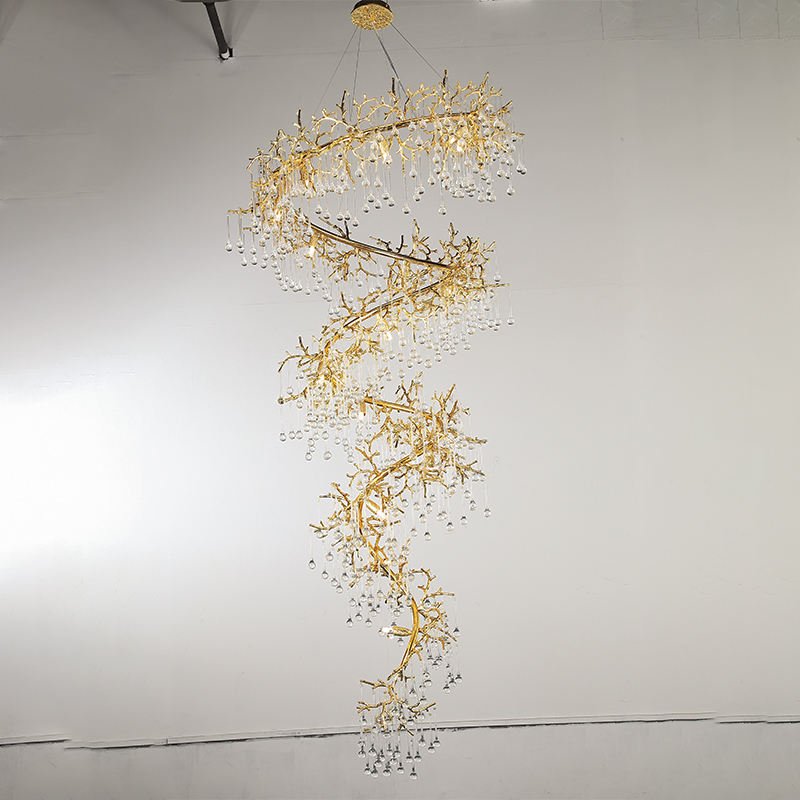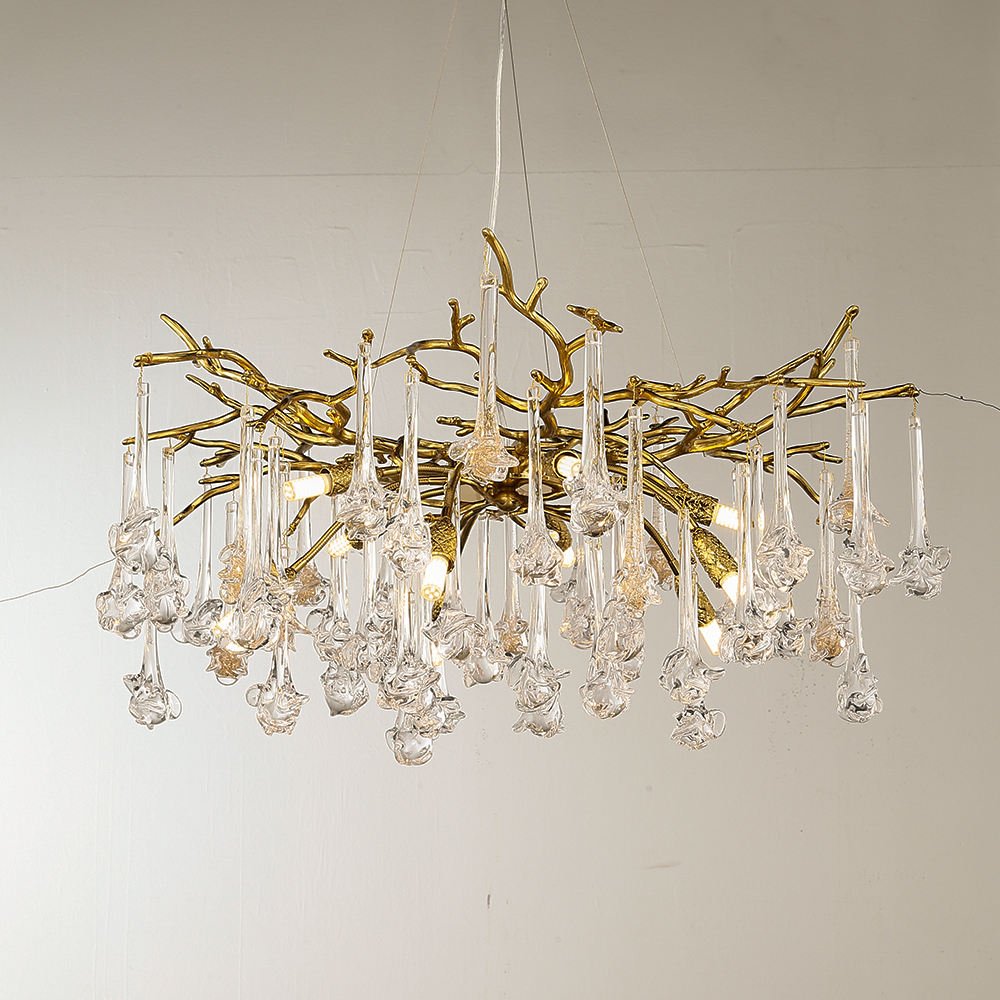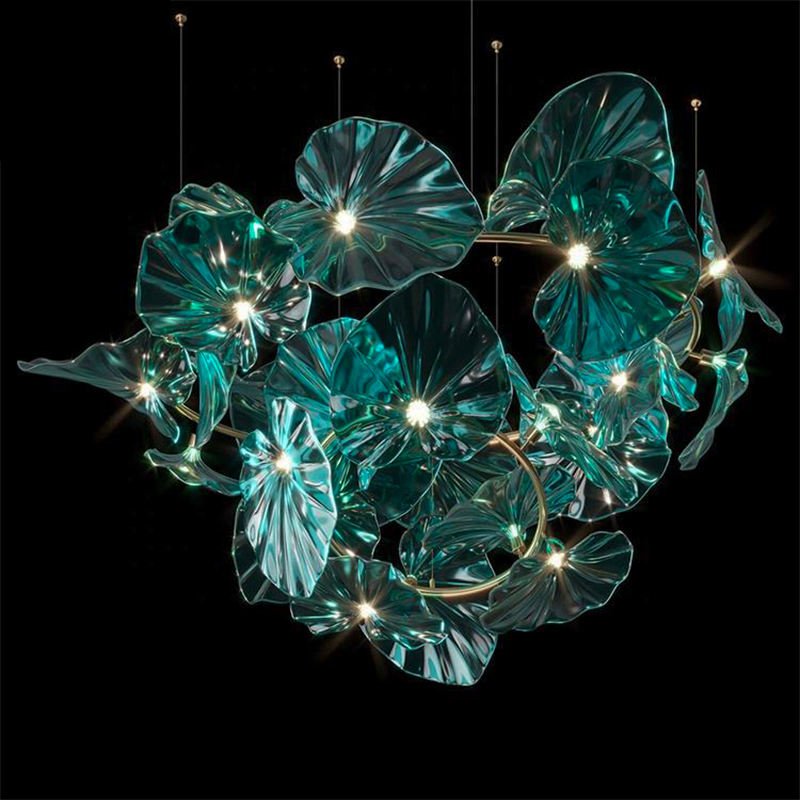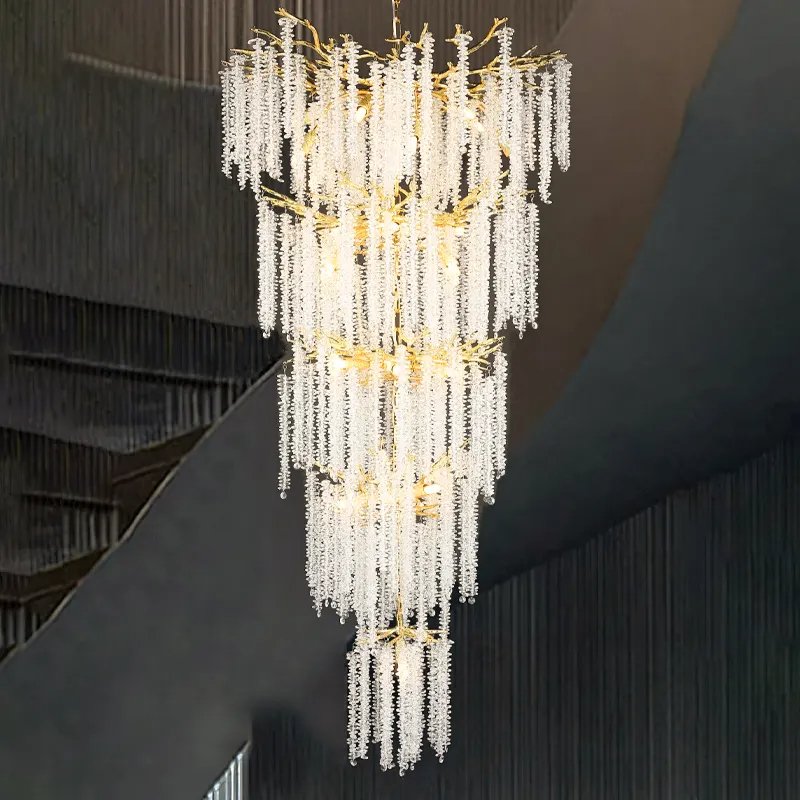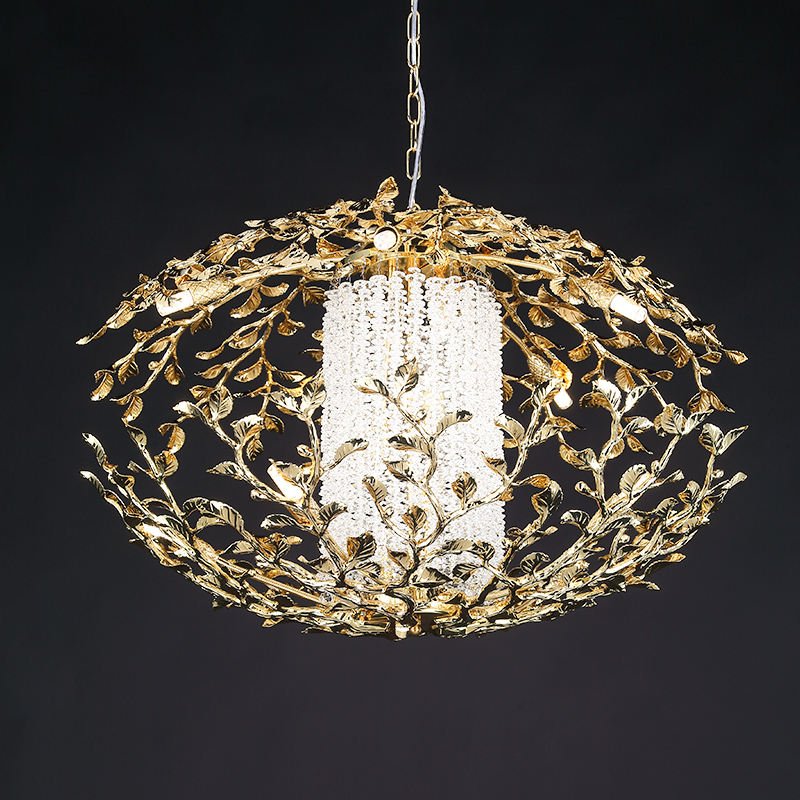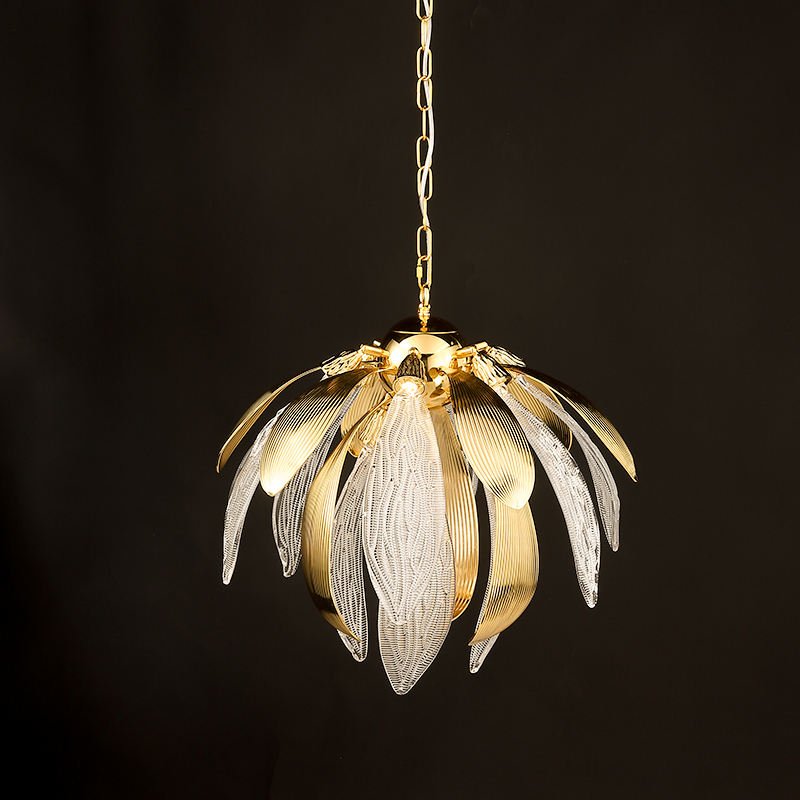Branch Chandeliers: Bringing Nature Indoors
Key Takeaways:
- • Branch chandeliers bring a touch of nature indoors, fitting many decor styles.
- • Styles range from rustic wood designs to modern metal and crystal fixtures.
- • Consider the room size and ceiling height when choosing a branch chandelier.
- • Unique features like crystal droplets or integrated LEDs make these fixtures stand out.
- • They work well in dining rooms, living rooms, and entryways.
- • DIY is possible but requires care; professional installation is often safer.
- • Trends point towards sustainable materials and smart lighting integration.
Branch chandeliers, eh? What makes ’em so special? Well, they bring a bit of the outside, inside. It’s like having a piece of sculptured nature hanging from your ceiling, lighting up the room. They ain’t just for log cabins anymore, not by a long shot. You find them in super modern apartments and classic old houses too. They just seem to fit in loads of places, adding a bit of wow factor without being too stuffy. It’s that mix of natural form and light that people really seem to connect with, I reckon.
Exploring Various Styles: Nature-Inspired Elegance
So, you’re thinkin’ about branch chandeliers? Good choice. But there’s a heap of different looks to check out. It’s not just one style fits all, y’know. You can explore various styles of branch chandeliers, and honestly, the variety is pretty amazing. Some really lean into that natural, twiggy look, sometimes using actual treated branches or materials that mimic them perfectly. Others are more abstract, takin’ the idea of branches and turning it into something sleek and artistic, maybe in polished chrome or brass.
Then you got your classic branch chandelier styles. These often blend traditional elegance with that organic shape. Think graceful, curving metal arms like branches, maybe drippin’ with crystals or holding candle-style lights. They kinda bridge the gap between a very formal chandelier and something more relaxed and nature-inspired. They work brilliant in dining rooms or entryways where you want somethin’ grand but not too over the top. Materials matter a lot here. A dark bronze finish feels different to a bright gold one, right? One might feel more old-world, the other more glam.
Let’s talk materials specifically. You’ll see:
- Metal: Brass, bronze, nickel, chrome, black iron. Each gives a different vibe – warm, cool, industrial, luxe.
- Wood: Sometimes real, sometimes faux. Adds that rustic or earthy touch.
- Glass/Crystal: Adds sparkle and refracts light beautifully. Can be subtle accents or the main event, like on those crystal droplet ones.
- Capiz Shell/Other Naturals: Less common, but adds unique texture and soft light.
Look at this one here, kinda icy and elegant, ain’t it? The silver branches with the clear drops, it’s proper sophisticated. Reminds me of winter trees. Perfect for a room with cool tones or where you want a bit of frosty magic.
Then there’s the other end of the scale, like this gold spiral one. Still branches, but totally different feel. This one’s pure luxury, almost like jewellery for your ceiling. The way it twists and the little crystals catch the light… yeah, that’s a statement piece. It shows how versatile the ‘branch’ idea can be – from stark and natural to totally opulent. Choosing the right style really depends on the room’s overall feel and what kinda statement you wanna make.
Rustic Charm: Branch Chandeliers and Wood Accents
Right, let’s get down to the roots, literally sometimes. When people first think ‘branch chandelier’, they often picture something rustic, don’t they? And yeah, that’s a big part of their appeal for certain styles. Rustic branch chandelier designs are perfect if you’re goin’ for that cozy, cabin-in-the-woods, or modern farmhouse vibe. These often use materials that look like real wood, or sometimes even incorporate actual treated timber branches. The finish is usually more matte or textured, not super shiny. Think weathered oak, dark walnut, or even a whitewashed look. The aim is to feel natural, grounded, kinda earthy.
A brilliant way to enhance this feel is by combining branch chandeliers with wood accents elsewhere in the room. Got exposed ceiling beams? A big wooden dining table? Wood paneling on a wall? A rustic branch chandelier will tie right in, making the whole design feel cohesive. It’s about repeating those natural textures and tones. Imagine a big, antler-style branch chandelier (okay, maybe not real antlers unless that’s your thing, but that kinda shape) hanging over a chunky reclaimed wood table. It just works, doesn’t it? Creates a real focal point that feels both impressive and inviting.
Even a more elegant design like this gilded one above can have rustic hints depending on the context. The branch form is there, the crystals add elegance, but imagine it in a room with rough-hewn wooden shelves or a stone fireplace – it could create a really nice contrast, that rustic-luxe thing people are loving. It’s not always about going full-on log cabin; sometimes it’s about adding just a touch of the outdoors.
Here’s what often defines a rustic branch chandelier:
- Materials: Emphasis on wood-look finishes, dark or weathered metals (iron, bronze).
- Texture: Often rougher, more natural textures rather than smooth polish.
- Form: Might be more irregular, less symmetrical, closer to a real branch shape.
- Lighting: Often warmer light, maybe Edison bulbs or candle-style lights.
These fixtures are great in spaces where you want warmth and character. Think family rooms, dining areas where you gather, maybe even a large entryway in a country-style home. They bring a sense of history and nature indoors. Just be mindful of scale – a truly rustic, chunky chandelier needs a room with enough height and space to carry it off without overwhelming things. Getting that balance right is key, I’ve seen some shockers where a massive fixture just dominates a small room. Measure twice, buy once, eh?
Modern Twists: Sleek Branch Designs in Contemporary Homes
Now, don’t go thinkin’ branch chandeliers are just for rustic spots. Far from it. They’ve had a serious glow-up and fit right into sleek, modern homes too. How do they manage that? It’s all about interpretation. Instead of literal twigs, modern designs often take the essence of a branch – its lines, its angles, its way of reaching out – and translate it into polished metal, smooth glass, or geometric forms. You get the organic feel, but with a clean, contemporary edge. It’s interesting to see how these fixtures create specific lighting effects in modern interiors, playing with shadow and light in a way that complements minimalist spaces.
When you compare modern vs. traditional lighting styles, the modern branch chandelier often stands out for its simplicity and use of newer tech. Many incorporate LED lighting directly into the ‘branches’. This means no visible bulbs, just lines or points of light integrated into the structure itself. It looks incredibly clean and futuristic. Finishes tend towards polished chrome, sleek black, brushed nickel, or warm golds and brass, but with a smooth, refined surface. Think less ‘forest floor’, more ‘art gallery’.
Take this aqua glass one, for example. It’s inspired by nature (lily pads, maybe?), but the execution is pure modern art. The floating glass elements, the minimal structure – it would look stunning in a high-ceilinged contemporary living room or entryway. It brings colour and an organic shape without any rustic connotations at all. It’s light, airy, and definitely a conversation starter. I fitted something similar once in a very minimalist apartment overlooking a city skyline, and the contrast between the organic light fixture and the geometric buildings outside was just fantastic.
Modern branch designs often feature:
- Sleek Materials: Polished metals (chrome, gold, nickel), clear or coloured glass, acrylics.
- Integrated Lighting: LEDs built into the arms are common.
- Abstract Forms: Less literal interpretation of branches, more focus on lines and structure.
- Minimalism: Often cleaner lines, less ornamentation compared to traditional or rustic styles.
These modern interpretations are super versatile. They can soften a very angular, minimalist room or add an artistic touch to a more transitional space. They work well over kitchen islands, in modern dining rooms, or as a statement piece in a living area. The key is the finish and the form – choose one that complements the existing metals and shapes in your room. As highlighted in discussions about Modern Chandeliers for Living Room Design in 2025, these nature-inspired but sleek designs are definitely on trend.
And look at this gold crystal one with LEDs. The branches are clear, sharp lines, the crystals add glamour, and the integrated LEDs give it that modern tech feel. It’s a perfect blend of nature, luxury, and contemporary design. It proves that the branch concept can be pushed in really interesting, stylish directions beyond just the rustic look.
Unique Features That Make Branch Chandeliers Stand Out
What really sets some branch chandeliers apart? It’s those little details, the unique branch chandelier features that catch your eye and make you say ‘wow’. It’s not just about the basic shape; it’s about how designers play with materials, light, and form to create something truly special. Think beyond just metal arms – maybe it’s the way crystals are incorporated, mimicking dew drops or icicles. Or perhaps it’s the use of unexpected materials, like blown glass elements shaped like leaves or flowers attached to the branches.
Sometimes the uniqueness comes from the sheer complexity or artistry of the design. Look at this Golden Leaf Crystal Nest chandelier below. It’s not just branches; it’s a whole intricate structure, like a bird built a nest out of gold and jewels. It’s extravagant, detailed, and definitely not something you see everyday. Fixtures like this aren’t just light sources; they’re sculptures. They become the absolute focal point of a room, demanding attention. Putting one of these up, you gotta be sure the rest of the room can handle it, or maybe you design the room around the light. I remember installing a very complex piece once, took two of us half a day, felt more like assembling a delicate artwork than fitting a light!
Other unique features might include:
- Unusual Finishes: Two-tone metals, hand-applied patinas, textured glass.
- Interactive Elements: Some high-end designs might have adjustable arms or components.
- Specific Motifs: Designs incorporating leaves, flowers, birds, or other natural elements in detail.
- Dramatic Scale: Extra large or unusually shaped fixtures designed for grand spaces.
- Light Play: Designs specifically crafted to cast interesting shadows or patterns on the walls and ceiling.
This Crystal Raindrop one is another example. The branch structure is there, quite subtle, but the main event is the cascade of crystals, like a sudden downpour frozen in time. It’s glamorous, creates amazing refracted light, and feels very luxurious. It takes the branch idea and uses it as a framework to show off something else – in this case, the beauty of the crystals.
So, when you’re lookin’ for a branch chandelier, think about what kind of ‘unique’ you want. Do you want something subtly different, or a full-on showstopper? Pay attention to those special details – the quality of the crystals, the finish on the metal, the way the light sources are integrated. These are the things that elevate a simple fixture into a piece of lighting art. It’s often these unique touches that justify a higher price tag, reflecting the craftsmanship and design involved.
Where Do Branch Chandeliers Shine Best in Your Home?
Alright, so you’re sold on the idea of a branch chandelier. Fab. But where exactly should you put it? Knowing the best uses for various types of branch chandeliers is pretty crucial, ’cause putting the wrong style or size in a space can look a bit off. You wouldn’t wear hiking boots with a cocktail dress, right? Same idea. A big, rustic wooden branch chandelier might look amazing in a double-height living room with exposed beams, but kinda silly squeezed into a small, modern kitchen.
Let’s break down some common spots:
- Dining Room: This is prime territory. A branch chandelier centered over the dining table creates a beautiful focal point. The style can match the room – rustic for farmhouse, sleek metal for modern, crystal-adorned for formal. Size matters here; it should feel balanced with the table, typically about 2/3rds the width of the table is a good starting point. And hang it low enough to feel intimate, but high enough so people don’t bump their heads – about 30-36 inches above the tabletop is standard.
- Living Room: Often the largest room, so it can handle bigger, more statement-making pieces. A branch chandelier can replace a standard central ceiling light, adding way more personality. Consider the ceiling height – taller ceilings can take larger, more dramatic fixtures. If you have multiple seating areas, you might even use smaller branch pendants to define zones.
- Entryway/Foyer: First impressions count! A stunning branch chandelier here sets the tone for your whole home. If you’ve got a high ceiling, go for something with vertical presence. If it’s a smaller entryway, a more compact or flush-mount branch design could work. This Luxe Crystal Rod Chandelier below, with its vertical elements and branch accents, could look fantastic in a foyer with decent height.
- Bedroom: Yep, you can use them here too! Creates a touch of romance or nature-inspired calm. Usually, you’d go for something a bit softer, maybe smaller scale, perhaps with a warmer finish or dimmable lights. Centered in the room or sometimes even over the bed (if the ceiling is high enough!).
- Kitchen: Over an island is a popular spot. Often, people use two or three smaller branch pendants in a row rather than one large chandelier. Needs to be cleanable, though, kitchens get greasy! Sleek metal or glass finishes are probably more practical than intricate wooden ones here.
Think about the light needed too. Is it the main light source, or just accent lighting? Branch chandeliers vary hugely in how much light they put out. Some are bright and functional; others are more about ambiance. Check the number of bulbs and wattage recommendations. Using a dimmer switch is nearly always a good idea, gives you control over the mood.
And don’t forget hallways or landings. A smaller, perhaps simpler branch fixture, like this elegant pendant light below, can add interest to these transitional spaces without overwhelming them. It’s about finding the right scale and style for each specific spot.
Thinking of DIY? What You Need to Know First
Seen some amazing branch chandeliers online and thought, “Hmm, maybe I could make one myself?” It’s tempting, right? Especially if you’re crafty or want something totally unique. There are guides out there, like this DIY step-by-step guide, that can walk you through the process. It often involves finding a suitable branch (making sure it’s properly dried and treated so it doesn’t, y’know, rot or catch fire), figuring out the wiring, adding sockets, and then the final assembly. Sounds straightforward-ish? Well, maybe.
But hold your horses. Before you go foraging in the woods, it’s really important to understand the potential pitfalls. Wiring anything electrical needs care. Get it wrong, and you’re looking at fire hazards or shocks. No joke. There’s a reason electricians train for years. Understanding wire gauges, load capacity, proper grounding, and safe connections is vital. You might also want to familiarise yourself with general building safety standards, like those mentioned in resources such as the Building Manual (though that’s very detailed, the principle of safety compliance is key). Messing up the electrical side is one of the biggest DIY common mistakes to avoid.
Other common DIY issues include:
- Weight: Real branches can be heavy. Is your ceiling box rated to hold the weight? Pulling the fixture down is not the look you’re going for.
- Balance: Getting a natural branch to hang straight and balanced can be trickier than it looks.
- Finish: Properly treating and sealing the wood is crucial for longevity and safety (fire resistance).
- Aesthetics: Sometimes the end result doesn’t quite match the vision. Getting the proportions and look right takes a good eye.
- Insurance/Certification: DIY electrical work might void your home insurance if something goes wrong. Professionally made fixtures are tested and certified (like UL listing) for safety.
Look at a professionally made piece like this Luxe Gold Lotus Blossom Chandelier. The complexity, the finish, the integration of the lighting components – achieving this level of quality and safety in a DIY project would be incredibly difficult, if not impossible for most people.
So, should you DIY? If you’re very experienced with electrical work, understand the safety requirements thoroughly, and are aiming for a very simple, rustic design, maybe. But for most people? Probably not the best idea for a chandelier. There are so many stunning, safe, and professionally crafted options available. Sometimes, it’s worth investing in a piece that’s guaranteed to be safe and look amazing, rather than risking a DIY disaster. You could always channel your creativity into other decor elements instead!
Branch Chandelier Trends: What’s Next?
So, we know branch chandeliers are popular now, but what’s coming down the track? Are they just a fad, or are they sticking around? Looking at general 2025 Chandelier Trends and broader Lighting Trends for 2025, it seems nature-inspired designs are definitely here to stay, but they’re evolving. The core appeal – bringing organic forms indoors – remains strong, but we’re seeing new materials, tech, and styles emerge.
One big trend is sustainability. Expect to see more branch chandeliers made from reclaimed wood, recycled metals, or other eco-friendly materials. Designers are getting clever about creating beautiful fixtures with a lighter environmental footprint. This might mean designs that are easier to repair or disassemble at the end of their life, too. It’s not just about looking natural; it’s about being more natural in terms of impact.
Smart technology is another area. Imagine a branch chandelier where you can control the colour temperature or brightness of individual ‘twigs’ via an app. Or maybe fixtures with integrated sensors that adjust the light based on ambient daylight. While high-end features now, this kind of integration is likely to become more common, blending organic aesthetics with cutting-edge tech. Think LEDs getting even more efficient and versatile.
In terms of style, we might see more maximalist interpretations. While sleek, minimalist branches have been popular, trends often swing back. So, perhaps more elaborate, highly detailed designs, maybe incorporating bolder colours or more complex crystal arrangements, like the luxurious feel of this spiral chandelier.
We could also see more material mixing. Instead of just metal or just wood, maybe combinations of concrete and brass branches, or woven natural fibers incorporated into the structure. Designers are always experimenting. Think about textures playing a bigger role too – rough, tactile finishes contrasted with smooth, polished elements within the same fixture.
Here’s a quick look at potential directions:
| Trend Area | Potential Development | Example Idea |
|---|---|---|
| Materials | Sustainable, Recycled, Mixed | Reclaimed barn wood branches with recycled glass buds |
| Technology | Smart Controls, Tunable White, Sensors | App-controlled brightness on each ‘branch’ |
| Style | Maximalism, Bolder Colours, More Detail | Intricate floral elements woven into metal branches |
| Form | Asymmetry, Modularity, Sculptural | Chandeliers made of connectable branch modules |
| Integration | Blending with Architecture | Branches appearing to ‘grow’ out of the ceiling |
The basic branch form is so adaptable, it can absorb these trends without losing its core identity. So, yeah, I reckon they’ll be around for a good while yet, just continuing to evolve and surprise us. It’s a classic concept reimagined for different times and tastes.
Choosing the Right Branch Chandelier for You
Okay, decision time. You’ve seen the styles, the options, the trends… how do you actually pick the right branch chandelier for your own place? It’s easy to get overwhelmed with choice. But if you break it down, it gets simpler. Think about these key things:
First up, style compatibility. Does the chandelier’s vibe match your room? A super modern chrome branch fixture might look odd in a very traditional, antique-filled room (unless you’re deliberately going for high contrast, which takes guts!). Look at the existing finishes in your room – metals on lamps, door handles, furniture legs. Try to choose a chandelier finish that complements them. Doesn’t have to match exactly, but should feel harmonious. Consider the overall mood – cozy rustic, sleek modern, glam luxe? Pick a chandelier that enhances that feeling. Exploring different lighting styles can help clarify what works best.
Next, size and scale. This is HUGE. A chandelier that’s too small looks lost; one that’s too big swamps the room. General rules of thumb exist (like adding room length and width in feet gives a rough diameter in inches), but use your eye too. Consider ceiling height – low ceilings usually need more flush or semi-flush designs, while high ceilings can take taller, grander fixtures. Measure the space carefully. Think about visual weight too – a delicate, airy design feels smaller than a chunky, solid one, even if the dimensions are similar.
An airy design like this works well where you don’t want heavy visual weight.
Then, function. What do you need the light to do? Is it the main source of illumination for the room? If so, check the wattage and number of bulbs. Ensure it provides enough light (lumens). Or is it more for ambiance and decoration? In that case, brightness might be less critical, but maybe dimmability is important. Consider the type of light – warm and cozy, or cool and bright? This often depends on the bulbs used (or the built-in LEDs).
Materials and maintenance matter too. Crystal chandeliers need regular dusting to keep their sparkle. Wood might need occasional care depending on the finish. Polished metal shows fingerprints. Think honestly about how much cleaning you’re prepared to do! Also, consider durability, especially if it’s going in a high-traffic area or a kitchen.
Finally, budget. Branch chandeliers range from reasonably affordable to seriously high-end. Set a realistic budget beforehand. Remember to factor in potential installation costs if you’re not doing it yourself (which, as we discussed, is often wise!). Sometimes investing a bit more gets you much better quality materials, construction, and design that will last longer and look better.
Think through these points, browse the options (like these various types), and trust your gut feeling too. The right branch chandelier will not only light up your room but also bring you a bit of joy every time you look at it.
Frequently Asked Questions (FAQs)
Q1: How high should I hang a branch chandelier?
A: Over a dining table, aim for the bottom of the fixture to be 30-36 inches above the tabletop. In a living room or entryway, it depends on ceiling height, but generally, the bottom should be at least 7 feet off the floor to allow clearance. For very high ceilings, you might hang it lower to feel more connected to the space, but always ensure adequate headroom.
Q2: Are branch chandeliers hard to clean?
A: It depends on the design! Simple, sleek metal ones are easier – just dusting. Ones with lots of intricate details, crystals, or rough wood textures will take more time. Regular dusting with a soft cloth or duster (like a lambswool one) is key. For crystals, occasionally wiping with a specialized cleaner might be needed. Always turn the power off before cleaning!
Q3: What kind of bulbs do branch chandeliers use?
A: It varies widely. Some use standard E12 (candelabra) or E26 (medium) base bulbs, letting you choose LED, incandescent, or halogen. Many modern designs have integrated LED lighting, meaning the LEDs are built-in and not replaceable like traditional bulbs (though they last a very long time). Check the product specs before buying.
Q4: Can I use a branch chandelier with a low ceiling?
A: Yes, but choose carefully. Look for designs described as “flush mount” or “semi-flush mount” which sit closer to the ceiling. Avoid chandeliers with a lot of vertical height or long chains/rods. Choose styles that spread outwards rather than downwards. Measure carefully to ensure enough headroom.
Q5: Are branch chandeliers expensive?
A: Prices range hugely! You can find simpler, smaller branch-style fixtures at fairly accessible price points. However, large, intricate designs made with high-quality materials like solid brass, hand-blown glass, or lots of crystal can be quite expensive, reflecting the craftsmanship and materials involved. Set a budget and shop around.



